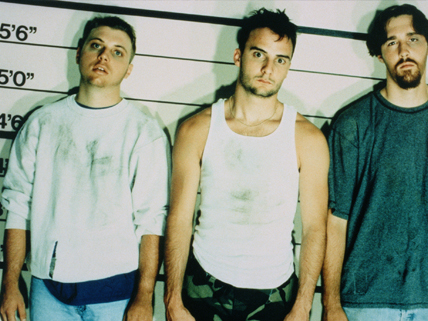If you have watched any old legal dramas on TV, you’ve seen the climactic scene when the witness points to a courtroom spectator and proclaims, “I know Billy Bob is innocent because I saw Ricky Roy kill Cindy Sue!” Everyone gasps, and Ricky Roy is hauled off in handcuffs. The assumption was that eyewitness testimony is totally reliable.
We know now that eyewitnesses often identify innocent people—whether intentionally or unintentionally—as the perpetrators of crimes. In fact, revealing that eyewitness testimony can be unreliable is nothing new. In 1858, Abraham Lincoln defended William “Duff” Armstrong against a murder charge. The chief accuser testified that the light of the moon illuminated the nighttime murder as he watched from about 150 feet away. Lincoln used an almanac to prove that the moon could not have shed enough light for the witness to see anything clearly. Armstrong was acquitted.
Today law enforcement has more powerful tools than almanacs for keeping innocent people out of jail. In recent decades, DNA tests have cleared dozens of prison inmates who had been positively, even emphatically, identified as guilty by crime victims or bystanders.
Some police departments are taking a new step to make sure that innocent people are not even charged. These departments are getting rid of the traditional lineup, in which witnesses view a line of possible suspects in an attempt to single out the person who committed the crime. Instead, the witness views photos of suspects, along with people unconnected to the event, one at a time.
The Austin, Texas, Police Department is one of many nationwide that are using this method. In experiments where the suspect was known, the results of using sequential photos were much better than with the conventional lineup strategy. With the sequential method, witnesses compare suspects’ faces only to their own memories, rather than to other faces. There is also a lower chance of the supervising detective influencing an accusation or unconsciously guiding the witness toward a certain suspect. In addition, subtle effects such as bad lighting or a suspect’s poor posture are eliminated.
Image credit: © Tom Hussey/Stone/Getty Images
Related Links
-
Austin Police Change Witness ID Policy
Read why and how the APD changed its suspect-identification process.
(Source: Austin American Statesman, January 7, 2013) -
Whoa, whoa, whoa . . . One at a Time: Examining the Responses to the Illinois Study on Double-Blind Sequential Lineup Procedures
This article fully examines the sequential-versus-simultaneous lineup issue. It includes criticisms of the new procedure.
(Source: Utah Law Review; accessed January 31, 2013) -
Eyewitness Misidentification
Eyewitness misidentification is a major cause of wrongful convictions. For the organization’s recommendations, scroll down to “Click here to learn about reforms.”
(Source: The Innocence Project; accessed January 31, 2013)





first place!!!!!!!
no
no